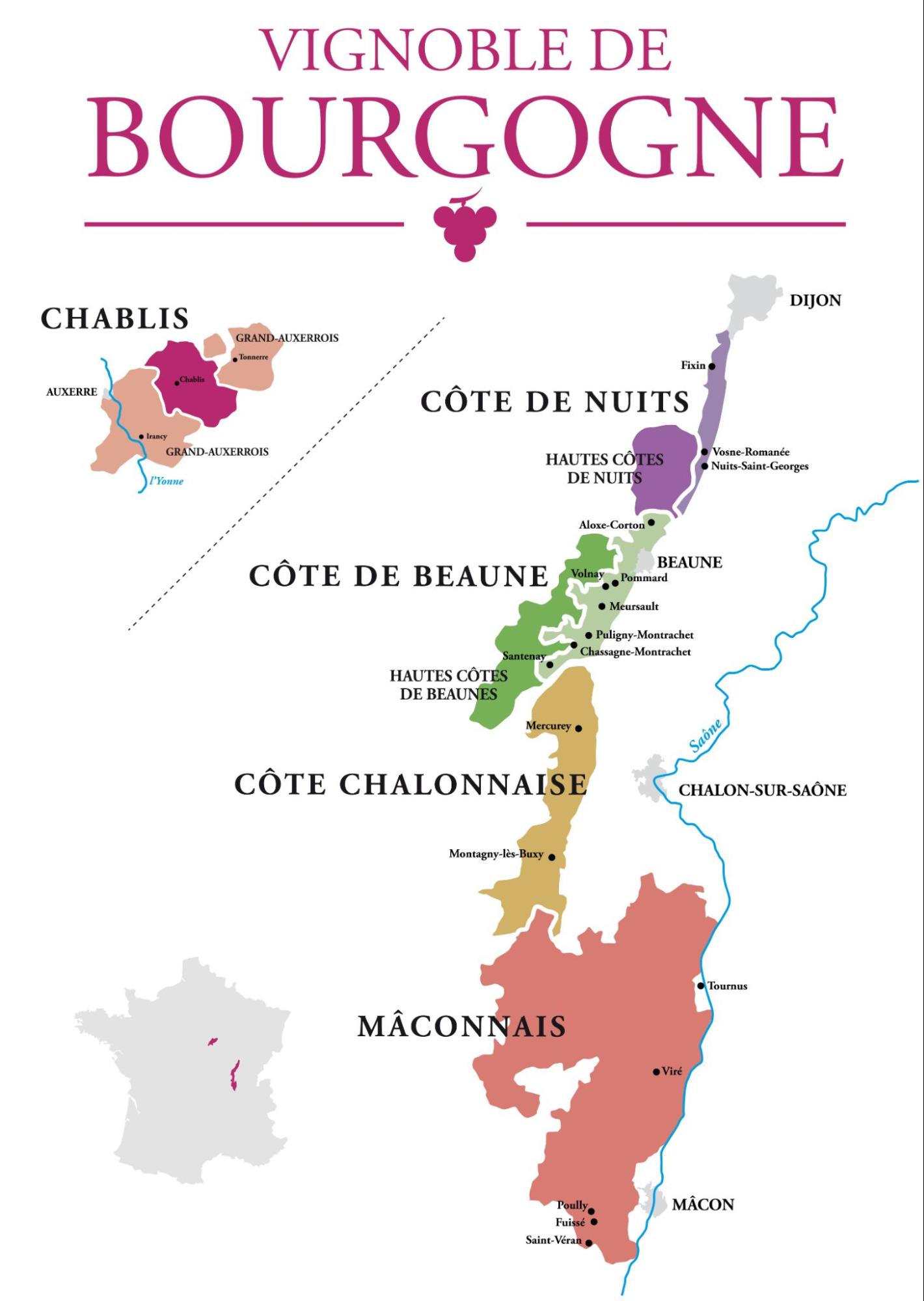- Wine Color/Type
- Top Occasions
- Unique Wines
- Surprise Me!
Blind Tasting Pinot Noir Like a Pro
Blind tasting is a compelling sport. (Andrey Popov/stock.adobe.com)
Blind tasting is often initiated when wine is poured into your glass without revealing the label, presenting a unique challenge that goes mere guessing. By harnessing your knowledge, you can elevate your approach from guesswork to skilled blind tasting.
Blind tasting focuses on the key elements of wine analysis, allowing you to explore the fundamentals of this practice. It is considered an art form, a means of identifying a wine's style, grape variety, origin, production method, and quality. Some tasters even claim they can discern the best market for a wine after tasting it.
However, it's worth noting that blind tasting is more about the process of elimination than about precisely identifying the wine or vintage. It involves providing logical reasoning and explanations for your conclusions.
Our journey begins with the still wines of the "King of Grapes": Pinot Noir.
The Attributes of Pinot Noir
Pinot Noir is a thin-skinned grape variety that often results in wines of a pale brick-red color. These wines can range from moderate to full-bodied, with alcohol levels typically between 13-15.5%. They are known for their elegant, grainy tannins and lively acidity. Pinot Noir is versatile, used in the production of sparkling wines like Champagne and Franciacorta, as well as in high-end blends. Occasionally, it's also used to create a Blanc de Noir, a white wine made from red grapes, which tends to be fuller-bodied than traditional white wines.
Our exploration begins in Burgundy, a region synonymous with Pinot Noir. Here, the grape expresses itself in myriad forms, reflecting the intricate nuances of its terroir. .
By understanding these attributes and starting with a focused region like Burgundy, you can approach blind tasting with confidence. Remember, the goal is not just to identify the wine to communicate a logical response.
Burgundy offers complex terroirs and requires a deep understanding of the region. (Photo: Lozz/stock.adobe.com)
Exploring Burgundy: The Heartland of Pinot Noir
Burgundy stands as the quintessential home of Pinot Noir, distinguished by diversity of terroir variations. Each appellation within this revered wine region produces distinct styles and quality levels of Pinot Noir. However, rather than attempting to pinpoint every Premier Cru, focusing on the classics can significantly enhance your understanding and appreciation. Recognizing these classic origins not only increases your chances of identifying the wine but also gives you the flexibility to refine your decision-making process during blind tastings.
Côte de Nuits
When tasting a Pinot Noir that you suspect originates from the Côte d'Or, an initial step might be to determine whether it's from the Côte de Beaune (south) or the Côte de Nuits (north). Generally, wines from the Côte de Nuits are noted for their spicier profile and fuller body, with tannins that offer more grip. They are often described as having a darker fruit expression, potentially due to higher levels of ripeness.
Gevrey-Chambertin
Gevrey-Chambertin, hosting nine of the thirty-three Grand Crus, is a logical starting point when you encounter a Pinot Noir of exceptional quality. The wines from this appellation are frequently described as "masculine" or "powerful," more full-bodied than those from Vosne or Morey-St.-Denis. Key characteristics include a powerful expression, voluptuous body, and high elegance, coupled with remarkable ageability, resulting in gamey and savory notes.
[insert:wine:domaine-de-la-vougeraie-gevrey-chambertin-2018]
Vosne-Romanée
Vosne-Romanée is a highlight of Burgundy, home to six Grand Crus. These wines are distinguished by their spicy and elegant profile, with floral nuances and a silky texture that underscores their unique elegance. The Premier and Grand Cru vineyards contribute to the complexity and distinction, making it one of the most prestigious appellations.
[insert:wine:joseph-drouhin-vosne-romanee-2020]
Côte de Beaune
Moving south to the Côte de Beaune, the focus shifts to wines that exhibit a purity of red fruits and floral notes. Despite the predominance of Chardonnay plantings, the region produces some exceptional Pinot Noirs.
Corton
The Grand Cru Corton is usually associated with red wines that are voluptuous, featuring high, grippy tannins and savory notes. Adjacent to Corton, Corton-Charlemagne is renowned for its exceptional high-end Chardonnays, reputedly favored by Charlemagne himself.
[insert:wine:domaine-antonin-guyon-corton-grand-cru-clos-du-roy-2017]
Pommard & Volnay: Contrasting Neighbors
In the landscape of Burgundy, Pommard and Volnay present a study in contrast, despite their geographical proximity. Pommard is recognized as a powerhouse, known for its distinctive, energetic tannins and high intensity. Although it doesn't boast Grand Cru vineyards, the robustness of Pommard's wines makes a significant statement.
[insert:wine:domaine-nicolas-rossignol-pommard-les-vignots-2017]
Conversely, Volnay offers a more floral and lighter touch, with a refined and airy character. The perfumed and elegant structure of Volnay's wines starkly contrasts with its neighbor, showcasing the diversity that a few kilometers can introduce within the same region.
[insert:wine:domaine-marquis-d-angerville-volnay-champans-1er-cru-2019]
USA: A Diverse Landscape for Pinot Noir
Russian River Valley
In the United States, the Russian River Valley in Sonoma County is a notable region for premium Pinot Noir. Characterized by wines that may exhibit high alcohol levels (15% ABV and above), this area produces Pinot Noirs with a mix of dark and red fruit flavors, high, fine tannins, and a body that surpasses its intensity. These wines often feature integrated aromas from New French oak and require a few years of aging to fully reveal their complexity and elegance.
[insert:wine:kosta-browne-russian-river-valley-pinot-noir-2021]
Sonoma County & Coast
Zooming out to Sonoma County at large, including the Sonoma Coast, the region offers medium- to full-bodied Pinot Noirs with dark fruit notes. The coastal influence tends to lighten the wines, bringing a crisp acidity that distinguishes them from their inland counterparts.
[insert:wine:red-car-sonoma-coast-pinot-noir-2020]
Oregon
Oregon has emerged as a significant player in the Pinot Noir scene, partly due to Burgundian producers establishing second estates in the region. These wines are generally premium, fruit-forward, and exhibit exceptional oak integration. The most well known region for Pinot Noir in Oregon is Willamette Valley. Compared to Californian Pinot Noirs, Oregon's offerings are lighter, dryer, and characterized by a silky and elegant texture, with alcohol levels around 14-14.5% ABV.
[insert:wine:elk-cove-estate-pinot-noir-2021]
Italy: An Emerging Pinot Noir Region
While Italy may not be the first country that comes to mind for Pinot Noir, regions like Alto Adige have made a name for themselves with this grape, locally known as Pinot Nero. The wines from Alto Adige are often produced by cooperatives that emphasize quality. They typically feature overt red fruit flavors, a light body, well-integrated light oak influence, high crisp acidity, and a red-fruited finish.
[insert:wine:tramin-blauburgunder-pinot-nero-2021]
Its not about nailing, its about giving a logical conclusion. (Photo: DGC/stock.adobe.com)
Germany: A Burgundian Parallel
Germany is often referred as the "Burgundy outside of Burgundy" for its exceptional Pinot Noir, known locally as Spätburgunder. The country's cool climate is a boon for the grape, contributing to the wine's freshness and light body. The long growing season allows for a higher intensity of flavors, while the tannins remain low to moderate, soft, and grainy.
Entry-level expressions in Germany might be blended with Dornfelder or undergo thermo vinification to achieve a darker color and smoother palate. Key regions for premium Pinot Noir include Baden, Ahr, Nahe, Rheingau, and Rheinhessen, each producing distinct and highly regarded wines.
[insert:wine:frank-john-kalkstein-pinot-noir-2018]
Australia: Cool Climate Excellence
While Australia is globally renowned for its robust Cabernet Sauvignon, Shiraz, and even Grenache, the cooler regions of Tasmania, Adelaide Hills, and Yarra Valley are making waves with high-end Pinot Noirs. Tasmania, known mainly for sparkling wines, generally plays a lesser role in still Pinot Noir tastings, but it shouldn't be overlooked for its quality producers like House of Arras, known for their crisp acidity and elegant wines.
The Yarra Valley, near Melbourne, attracts weekend tourists and some affluent city dwellers who own boutique wineries. The winemaking approach here often involves destemming the grapes to emphasize the wine's fruity and velvety character.
[insert:wine:innocent-bystander-pinot-noir-2019]
Mornington Peninsula, to the west, is renowned for producing some of Australia's most concentrated and full-bodied Pinot Noirs, offering a unique expression.
[insert:wine:moorooduc-pinot-noir-2018]
New Zealand: Bright and Clear Profiles
New Zealand stands out for its clear and bright Pinot Noirs, particularly from Central Otago—the world's southernmost wine region. Here, the wines are characterized by a dark fruit profile, ripe tannins, and a full body. Beyond Central Otago, New Zealand's varied terroirs contribute to the nation's reputation as a producer of premium Pinot Noir, with each region offering a distinct interpretation of this versatile grape.
[insert:wine:felton-road-bannockburn-pinot-noir-2021]
While renowned regions such as Burgundy have long been celebrated for their Pinot Noir, it's important to recognize that numerous other countries and regions, including Chile or Argentina, are also producing excellent examples of this varietal. However, discussing all of these would exceed the scope of this broad overview. Blind tasting, a complex and engaging sport, requires regular training and practice to develop one's skills.
Peter Douglas
Latest articles



